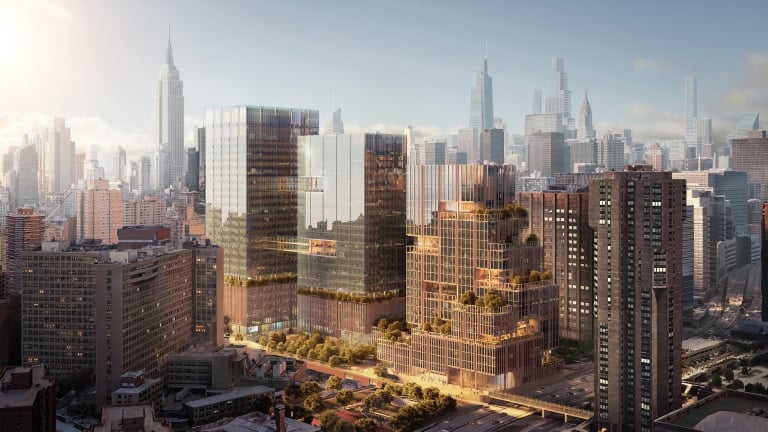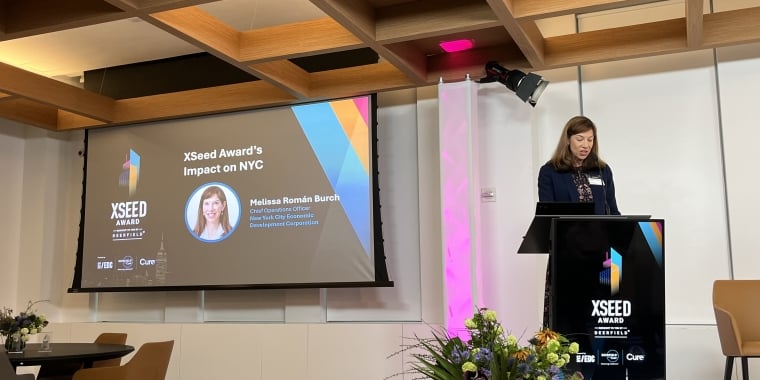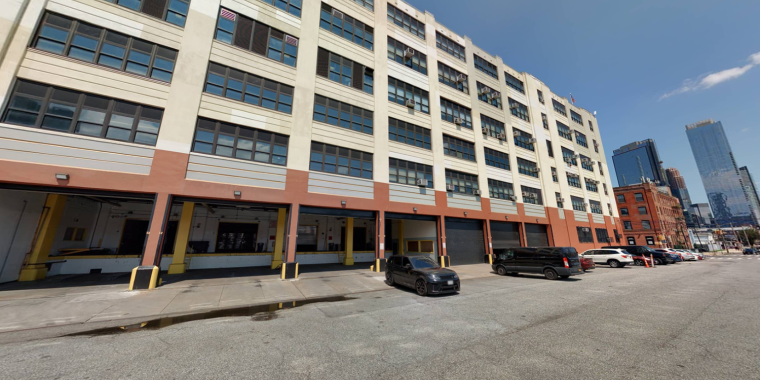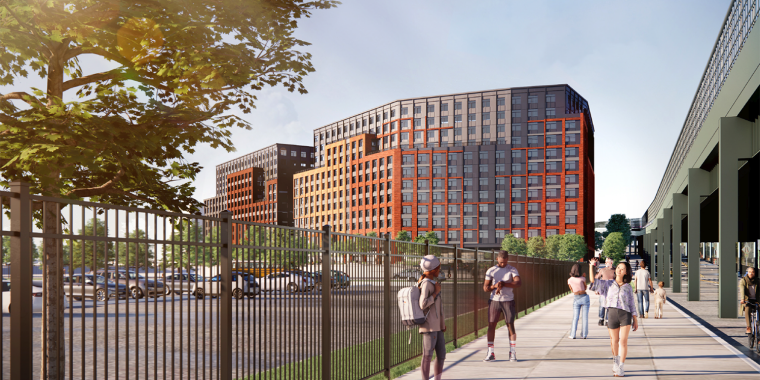NYCEDC Seeks Anchor Tenant to Establish Cutting-Edge Life Sciences Center at SPARC Kips Bay

NYCEDC Launches RFEI to Identify World-Class Anchor Tenant to Establish and Operate New State-of-the-Art Facility Which Will be a Critical Component of SPARC Campus
NYCEDC to Offer up to $100M of City Capital for the Life Sciences Center
NEW YORK, NY—New York City Economic Development Corporation (NYCEDC) today announced a request for expressions of interest (RFEI) will be released on Monday, March 4th, 2024, to source a world-class anchor tenant who will establish and operate a cutting-edge life sciences center at the Science Park and Research Campus (SPARC Kips Bay), a first-of-its-kind life sciences innovation, career, and education hub that will anchor the industry in New York City. This center can include a translational research institute, corporate innovation campus, non-profit or philanthropy led research entity, and an innovation hub or accelerator, among other opportunities. NYCEDC anticipates allocating up to $100 million of city capital to support the development of this innovation center.
SPARC Kips Bay campus will transform Hunter College’s Brookdale Campus into nearly two million square feet of academic, healthcare, and life sciences space, including up to one million square feet of life sciences real estate, a NYC Health + Hospitals outpatient care and simulation training center, the Office of the Chief Medical Examiner, three flagship CUNY schools, and a health-and-science-focused public high school.
Construction of the eastern portion of SPARC Kips Bay will be managed by NYCEDC with construction starting in 2025. The western portion will be built by a private development partner selected through a competitive process in 2025. The SPARC Kips Bay Life Sciences Center RFEI provides a unique opportunity for a selected respondent to be a leading part of cultivating a future-focused life sciences campus from the ground-up as an anchor tenant on the western portion of the Kips Bay Campus.
“To push our economy forward, we must continue to invest in future-focused industries like life sciences that will create accessible career pipelines for New Yorkers. We need real partners to help us move that vision to reality and today’s announcement of SPARC Kips Bay’s RFEI is just the beginning,” said New York City Mayor Eric Adams. “The SPARC Kips Bay campus will create more than 12,000 jobs right here in Manhattan and serve as a bridge to the next generation of New York City students as they take on the jobs of the future. We welcome innovative proposals to partner with the city and help shape opportunities for all New Yorkers.”
“New York City is a city for science. The recent meteoric growth of the Life Science sector can be largely attributed to New York's unique assets: our talent, the world's greatest research institutions, the best and brightest in industry, funding for companies at every stage, available space, and a culture of discovery, research, innovation, and commercialization. I am thrilled for the release of the SPARC RFEI because it is such a rare and exciting opportunity to find partners that are eager build on our strong foundation and further advance high-impact, high-value research and discovery in New York City,” said Deputy Mayor for Economic and Workforce Development Maria Torres-Springer.
“Life Sciences is entering an exciting new era powered by data, artificial intelligence, and machine learning. This RFEI is a historic and once in a generation opportunity to build on this momentum and propel New York City's Life Sciences ecosystem forward,” said NYCEDC President & CEO Andrew Kimball. “We expect proposals that deliver both leading edge initiatives to integrate advanced technology and science and deliver a catalytic anchor tenant for the Science Park and Research Campus in Kips Bay.”
SPARC Kips Bay represents the next step in New York City’s life sciences leadership. NYCEDC welcomes proposals from respondents that are future-focused; driven by the advances in technology in the life sciences industry; and excited to work across the public and private sectors to drive innovation, growth, and partnership. The RFEI seeks compelling proposals for life sciences Centers that achieve the following policy objectives: drive translational research & development (R&D) and commercialization, create interdisciplinary partnerships, advance talent development, and integration with other SPARC Kips Bay components. Respondents are encouraged to take creative license to showcase how they will be a unique, galvanizing, and global leader for life sciences in Kips Bay, New York City, and for the industry.
“The vision of SPARC Kips Bay – to create a unique campus that will accelerate growth of the life sciences in New York City – is exciting, timely and innovative. This is an unprecedented opportunity for an organization to lead a transformational initiative in our City and State, and indeed to impact the life science ecosystem in our nation and beyond. The future ‘anchor tenant’ will be at the epicenter of a campus dedicated to innovation, job creation and training the next generation of leaders in this field. The call to leverage life sciences and technology advances builds on the strengths of New York City and portends the establishment of a powerful niche in the sector for our community. We look forward to a broad expression of interest from diverse respondents who share this vision,” said Lasker Foundation President and LifeSci NYC Advisory Co-Chair Claire Pomeroy.
“Today’s announcement is very welcome news to those of us on the LifeSci NYC Advisory Council who have been envisioning a world-class life sciences ecosystem in New York City. By taking a holistic approach – expanding our infrastructure, partnering with industry leaders, establishing career-building pipelines, and training local talent – we see the potential to concentrate translational science, medical technology, and health care in this call for an anchor tenant on the broader SPARC Kips Bay campus,” said Professor of Medicine at Weill Cornell and LifeSci NYC Advisory Co-Chair Harold Varmus.
“This project is an opportunity to attract a world-class private sector partner to help anchor and expand the life sciences cluster along Manhattan’s east side in Kips Bay. Through the collaborative efforts of unique public-private partnerships like this, New York has emerged as a global hub for the life sciences sector,” said Maria Gotsch, President and Chief Executive Officer of the Partnership Fund for New York City. “The Partnership Fund looks forward to continuing our partnership with the city and state to drive growth in life sciences and the broader innovation economy.”
On November 17, 2023, Mayor Adams and Governor Hochul unveiled the Science Park and Research Campus (SPARC) Kips Bay Master Plan for this first-of-its-kind life sciences career and education hub that will anchor the city’s industry. The master plan outlines key project details, including a new site plan and conceptual design, a new model for education and job training pipelines, and updated economic impact projections showing how significantly it will further New York City's role as a global leader in creating and attracting accessible jobs in life sciences, healthcare, and public health by creating a pipeline from local public schools to careers in these essential sectors.
SPARC Kips Bay is expected to generate approximately $42 billion in economic impact over the next 30 years; create 15,000 jobs, including 12,000 construction and 3,100 permanent jobs in the life sciences sector; and transform an entire city block into nearly two million square feet of academic, public health, and life sciences space, advancing the LifeSci NYC goal of 10 million square feet of life sciences space by 2030.
The project will continue this legacy of successful public-private partnerships to help New York grow its life sciences industry, as supported by LifeSci NYC—a $1.1 billion initiative overseen by NYCEDC—to create 40,000 jobs over the next 10 to 15 years. Since the start of the initiative in 2016, there has been a five-fold increase in the number of life sciences companies and incubators/accelerators across the five boroughs, as well as a 52 percent increase in sector employment.
As showcased in the joint report, “Life Sciences in the NYC Metro,” released by the Department of City Planning and NYCEDC, by many measures the New York City metro area has the largest life sciences economy in the country, leading all other metro areas in the amount of National Institutes of Health (NIH) funding and the number of R&D scientists, healthcare workers, life sciences companies, and graduate students.
In addition to its strengths in scientific research and growing life sciences industry, New York City is home to the world’s second largest tech ecosystem, with over 25,000 startups and a workforce of 355,000 people throughout the tech ecosystem.
Advanced technologies such as data analytics, AI, ML, robotics, materials science, and others are driving a transformative era in many industries, particularly the life sciences. Machine learning and automation are augmenting traditional wet lab experiments, synthetic biology is addressing sustainability challenges, and robotics are enhancing the speed and precision of surgical procedures. With its robust tech and life sciences ecosystems, NYC is poised to take advantage of this intersection to produce groundbreaking scientific advancements, with an estimated impact of $12.6 billion by 2030.
SPARC Kips Bay presents a unique opportunity to integrate these advances as the city invests in the life sciences of the future. Click here to receive updates about the SPARC Kips Bay Life Sciences Center RFEI.
About NYCEDC
New York City Economic Development Corporation is a mission-driven, nonprofit organization that works for a vibrant, inclusive, and globally competitive economy for all New Yorkers. We take a comprehensive approach, through four main strategies: strengthen confidence in NYC as a great place to do business; grow innovative sectors with a focus on equity; build neighborhoods as places to live, learn, work, and play; and deliver sustainable infrastructure for communities and the city's future economy. To learn more about what we do, visit us on Facebook, Twitter, LinkedIn, and Instagram.


